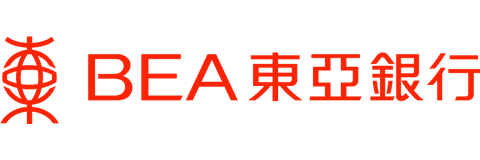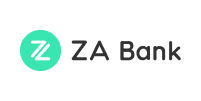[Loans 2025] Check out instant approval personal loan rates and the latest borrowing offers now!
Updated: 9 Dec 2025
🎁 申請完貸款?立即填表領取獎賞!
如果你已透過 MoneyHero 申請私人貸款,記得填寫獎賞換領表格並選擇你想要嘅禮品,幾步即可完成登記。專屬獎賞,切勿錯過!
1. Fill in the application form and submit it together with the required documents.
2. Wait for the loan approval result
3. Disburse the loan
- Instant disbursement upon loan approval*
- The loan amount is up to 12 times of the monthly salary or HK$3,500,000, whichever is lower
- Repayment term up to 60 months, HK$0 handling fee
- No hidden terms and conditions
1. HK Identity Card
2. Income proof,
e.g. latest month's payroll slip, latest salary tax demand note, latest MPF contribution proof or latest three months' payroll account bank statement/account passbook (with first page showing your name and account number)
3. Latest three months' full set of main bank statement/account passbook (with first page showing your name and account number)
4. Latest residential address proof (e.g. electricity bill or bank statement)
5. Any other documents or certificates deemed appropriate.
- The annualized percentage rate (“APR”) ranges from 1.30% to 35.78%, with repayment period of 6 to 60 months.
- The Annualized Percentage Rate ("APR") of as low as 1.30% (taking into account HK$2,000 cash rebate) or 1.40% (without any cash rebate) is calculated based on the monthly flat rate 0.063% with loan amount of HK$3,500,000 and repayment tenor of 12 months.
- The Annualized Percentage Rate ("APR") of as low as 35.78% is calculated based on the monthly flat rate 1.46% with loan amount of HK$100,000 and repayment tenor of 18 months.
- APR is calculated based on the guidelines as set out in the Code of Banking Practice and rounded up to the nearest two decimal places. Interest is calculated on the basis of 365 days per year. The actual APR applicable may differ, which is to be considered on a case-by-case basis in accordance with customer’s profile. An APR is a reference rate which includes the basic interest rate and other fees and charges of a product expressed as an annualized rate. The maximum APR will change and subject to monthly flat rate amendment. The Bank reserve the right to amend the monthly flat rate and APR. The loan application is subject to the Bank’s approval. For a loan amount of HKD3,500,000 with 12 months repayment period, the monthly flat rate is 0.063% (APR 1.40%, excluding any cash rebate), and the total loan repayment amount is HKD3,526,460 (including full handling fee waiver). The above example is for reference only.
Remarks:
- The Annualized Percentage Rate ("APR") of as low as 1.30% (taking into account HK$2,000 cash rebate) or 1.40% (without any cash rebate) is calculated based on the monthly flat rate 0.063% with loan with loan amount of HK$3,500,000 and repayment tenor of 12 months, and is applicable to Citigold Private Client customers with Citi ULTIMA. APR is calculated based on the guidelines as set out in the Code of Banking Practice and rounded up to the nearest two decimal places. Interest is calculated on the basis of 365 days per year. The actual APR applicable may differ, which is to be considered on a case-by-case basis in accordance with customer's profile. An APR is a reference rate which includes the basic interest rate and other fees and charges of a product expressed as an annualized rate
- Loan amount of Citi Tax Season Loan is up to 12x times of your monthly salary or HK$3,500,000, whichever is lower.
- Repayment period of Citi Tax Season Loan is of 6 to 60 months.
- Same day approval and same day loan disbursement is only applicable to selected customers who successfully submit the required documents together with a filled in application form before 10am of that working day (Monday to Friday). Actual approval and loan disbursement time may differ based on the information provided.
- Application hotline service hours: Monday to Friday 9:30am – 6:30pm (not applicable to Hong Kong public holiday)
- “Instant Disbursement Upon Loan Approval” is only applicable for disbursement to participating banks of Faster Payment System (FPS), and is subject to Citi’s loan approval and availability of FPS, while the crediting to the recipient’s account is subject to the recipient bank’s handling. Processing time may vary in some cases depending on the actual circumstances of individual applications.
To borrow or not to borrow? Borrow only if you can repay!
1. Apply online
2. Upload documents
3. Instant approval
4. Verification and disbursement
- Enjoy Cash Reward up to HK$33,800 upon successfully draw down
- A.I. fully automated loan with simplified loan process; from application, approval to disbursement, all done online.
- A.I. processes loan quickly, cash is transferred automatically and instantly once the loan is confirmed.
- Utilizing A.I. big data to calculate personalized quotations, ensuring the loan amount based on your needs.
- WeScore new credit indicator, assist you to restore long term financial health by using 400 million sets of data!
- HKID Copy
- Disbursement account proof
- Residential address proof
- Commission Based Salary: Minimum recent 3 months of Income Proof
- Real Estate Industry: Minimum recent 6 months of Income Proof
-
Parts of the cash rebate will be distributed by WeLab Bank, all cash rebate is subject to the terms & conditions.
- The above interest rates and repayment information are for reference only. The final terms will be determined based on the customer's application information and personal credit records.
- WELEND LIMITED reserves its absolute right on any loan approval decision and any disputes.
- Warning: You have to repay your loans. Don’t pay any intermediaries.
- Customer Service/ Complaint Hotline: 3590 6396
- Money Lender's License: 0900/2025
- Fill in the online application form
- Submit the required documents
- Receive the approval result
- Confirm offer and disburse loan
- APR as low as 1.38%
- Loan amount as high as HK$2,000,000 or 18 times of your monthly salary (whichever is lower)
- Flexible repayment period of 6 to 60 months
- Same day disbursement to your CNCBI account
1. HKID card / passport / other identification document
2. Bank statement or passbook showing your latest 1-month income proof (including the copy of front cover page
of your passbook which shows your name and account number) or any type of income proof. Please provide
the latest 2-month income proof if you are commission based income earner
3. If you are self-employed, please provide Business registration certificate and the latest profits tax demand note, and
the latest 3-month company account statements
4. Residential address proof showing your name issued within the latest 3 months (e.g. electricity bills or bank statements)
5. Proof of professional qualification (For professionals only)
6. If you are not holder of Hong Kong permanent identity card, please submit passport/ Exit/ Entry Permit for Travelling to and from Hong Kong and Macau/ identity card of place of origin and working visa issued by the Hong Kong SAR Government
7. Full copy of the front cover page of passbook / bank statement of the loan disbursement account
8. Autopay authorization form
9. Loan confirmation letter(s) or latest 1-month statement(s) (showing your name and account number) of credit card(s) and loan(s) that you wish to transfer to CNCBI $mart Plus Personal Installment Loan
- The APR is calculated in accordance with the practices and methods set out in the relevant guidelines issued by the Hong Kong Association of Banks. An APR is a reference rate which includes the basic interest rate and other applicable fees and charges expressed as an annualized rate. The respective APRs are rounded to the nearest two decimal places.
- The APR 1.38% is calculated based on loan amount HK$2,000,000, loan tenor of 12 months and monthly flat rate of 0.02%, including a Handling Fee of 0.5% per annum. The examples are for reference only. The APR will be determined based on the customer‘s credit rating and other relevant loan approval factors, and the bank reserves the final discretion to approve the loan application and to determine the applicable interest rate and handling fee. The handling fee of 1% is for other scenario.
- Handling Fee is charged 0.5% per annum based on loan amount and shall be deducted upon loan drawdown.
- Same-day fund disbursement service is applicable to customers who use CNCBI bank account for fund disbursement, and it only applies to our Bank’s service hours (Monday to Friday from 9:00 am to 8:00 pm and except Saturday, Sunday and public holidays). The processing time starts when the approved loan is confirmed with the Bank.
- Terms and conditions apply. To borrow or not to borrow? Borrow only if you can repay! Please visit the website
1. Apply Online
2. Application and Documents Submission: The relationship officer will contact you to complete the application form and submit the required documents.
3. Application Approval: Generally, the application result will be notified within 1 to 2 working days after submitting the documents. Instant approval can also be offered upon request, with the process completed as soon as the same day.
4. Loan Drawdown: Upon completion of loan confirmation process, the fund will be disbursed to your designated bank account via bank transfer or cashier order.
- APR as low as 1.38%
- Loan amount up to HK$3,000,000 or 12X of your monthly salary (whichever is lower)
- Repayment tenor up to 24 months
- Eligible customers can enjoy the “3-Month Interest-Free Skip-Payment” offer
- Personal Identification Document: HKID card or passport
- Income Proof: Recent pay slip, your bank statement or bank book (with your name and account number) showing your recent income, your recent income tax bill, proof of your last MPF contribution, employment letter or contract, etc.
- Address Proof: Recent bank statement, credit card statement, water bill, telephone bill etc. If your address is shown on your income proof, you will be exempted from submitting the address proof.
- Other documents (if necessary)
- For more details, please click here
- APR is calculated according to the method set out in the relevant guidelines under the Code of Banking Practice issued by the Hong Kong Association of Banks as the basis.
- If the loan amount is $1,500,000 with the monthly flat rate at 0%, when approval is obtained from the Bank, the APR for 12 months and 24 months will be 1.38% (inclusive of HK$6,800 cash rebate and 3-Month Interest-Free Skip Payment) or 2.71% (excluding cash rebate) and 2.86% (inclusive of HK$10,000 cash rebate) or 3.52% (excluding cash rebate) respectively, including the handling fee of 1.46% and 1.825% per annum, the total repayment amount will be HK$1,521,900 and HK$1,554,768. The handling fee shall be added onto the loan amount and to be paid together with the monthly instalments. The value of the Rebate that an Eligible Customer is entitled to will depend on the Loan amount applied for and drawn down and the APR.
- Example is for reference only, APR may differ with different loan amounts and tenors.
- For enquiries, please refer to OCBC Bank (Hong Kong) Limited - Tax Loan website.
- To borrow or not to borrow? Borrow only if you can repay!
- Online application with 24/7 instant approval and loan disbursement
- No income proof is required
- Repayment terms up to 72 months
- No handling fee, no early settlement fee
- Only applicable to eligible customers. For more loan and offer details, please visit the PrimeCredit website
- All examples and information of interest rate are for reference only, and final approval is subject to actual circumstances of individual personal loan applicant
(1) HKID Card
(2) Proof of address: such as utility bills, bank statements, etc., which need to show your name and most recent address.
(3) (Optional) Proof of income can be waived (subject to meeting credit record requirements)
- Warning: You have to repay your loans. Don't pay any intermediaries
- Enquiry and Complaint Hotline: 2111 2999
- Money Lender's Licence No.: 647/2025
1. Apply online
2. Upload documents
3. Approve instantly
4. Verify and disburse loan
- Maximum loan amount of up to 18X monthly salary or HK$4,000,000 (whichever is lower)
- Max Loan Repayment Tenure: 60 months; 0% handling fee
- 7-Day Cooling-off Period - Early redemption fees and changes waiver with waiver on early redemption fee and charges
1. Hong Kong Permanent Identity Card
2. Latest residential address proof showing your name
3. For regular income earners, please enclose latest 1 month’s computer generated Payroll Slip or latest 1 month’s Bank Statements / Passbook showing name, account number and salary entries;
For irregular income earners, please enclose latest 3 months’ computer generated Payroll Slip or latest 3 months’ Bank Statements / Passbook showing name, account number and salary entries;
For self-employed applicants, please enclose a Business Registration Certificate AND latest Profits Tax Demand Note
- The Annualised Percentage Rate is 1.85% (for clients with loan amount of HK$1,500,000 or above and tenor of 12 months). APRs are reference rates which include the basic interest rate and other applicable fees and charges of a product expressed as an annualised rate. This APR does not include cash rebate. The preferential interest rates are only applicable to clients who are not holding any Standard Chartered Credit Cards at the time of this application, or clients who use the Bank’s auto-payroll services or SCB Priority Private / Priority Banking Customers. The Bank reserves the right to determine the applicable interest rate and handling fee, and to approve a loan application, which is to be considered on a case-by-case basis in accordance with the client’s credit records and other relevant factors as the Bank may consider in its absolute discretion. All offers are subject to Terms and Conditions
- The Annualised Percentage Rates (“APR”) are reference rates which include the basic interest rate and other fees and charges of a product expressed as an annualised rate (if applicable).
- Standard Chartered Bank reserves the right to determine the applicable interest rate and handling fee and acceptance of a loan application, which is to be considered on a case-by-case basis in accordance with the client’s credit records and other relevant factors.
- Eligibility: With fixed annual income of HK$96,000 or above; and Hong Kong permanent residents aged 20 or above
- The monthly flat rate shown above was rounded to 2 decimal places and for reference only.
- To borrow or not to borrow? Borrow only if you can repay!
1. Apply online
2. Upload documents
3. Approve instantly
4. Verify and disburse loan
- Maximum loan amount of up to 24X monthly salary or HK$2,000,000 (whichever is lower);
- Max Loan Repayment Tenure: 84 months; 0% handling fee
1. Hong Kong Permanent Identity Card
2. Latest residential address proof showing your name
3. For regular income earners, please enclose latest 1 month’s computer generated Payroll Slip or latest 1 month’s Bank Statements / Passbook showing name, account number and salary entries;
For irregular income earners, please enclose latest 3 months’ computer generated Payroll Slip or latest 3 months’ Bank Statements / Passbook showing name, account number and salary entries;
For self-employed applicants, please enclose a Business Registration Certificate AND latest Profits Tax Demand Note
- The Annualised Percentage Rates (“APR”) are reference rates which include the basic interest rate and other fees and charges of a product expressed as an annualised rate (if applicable)
- Standard Chartered Bank reserves the right to determine the applicable interest rate and handling fee and acceptance of a loan application, which is to be considered on a case-by-case basis in accordance with the client’s credit records and other relevant factors.
- Eligibility: With fixed annual income of HK$96,000 or above; and Hong Kong permanent residents aged 20 or above
- The monthly flat rate shown above was rounded to 2 decimal places and for reference only.
- To borrow or not to borrow? Borrow only if you can repay!
New customers please click the "APPLY NOW" button to apply via BEA website
- Fill in personal information and loan details
- Submit required documents including HKID card and income proof
Existing customers please apply through BEA Mobile app, and insert promo code 「MHTL2025」
- Login to BEA Mobile and click “Tax Season Loan” at Offers for You
- Fill in loan details
- Insert promotion code “MHTL2025”
- Confirm personal information and job details
- Select repayment account
- Confirm application details
- Finish!
Application process and loan drawdown will be completed within 8 working days upon receipt of the complete requisite documents and information. If the requested loan amount is approved in full, The Bank of East Asia, Limited will not notify the applicant. The Loan amount will be credited to the applicant’s designated bank account directly.
- APR as low as 1%#
- Repayment tenor up to 60 months
- Loan amount up to HK$4,000,000 (16 times of monthly salary)
- 0% handling fee
- 7-days Cooling-off Period
- Hong Kong Identity Card
- Income Proof
Additional documents may be required for approval of application
-
# The Annualised Percentage Rate (“APR”) as low as 1.00% is for reference only (It is calculated as for a loan amount of HK$4,000,000, with a monthly flat rate of 0.0450% and a repayment period of 12 months). The preferential interest rate is only applicable to individual customers who fulfil the approval requirement on credit ratings, Salaries Tax or Personal Assessment for 2024/2025 is HK$1,000,000 or above. If customer’s loan application cannot fulfill our approval requirements such as credit ratings or other factors and requirements, BEA may evaluate the application on a case-by-case basis and the interest rate may be adjusted. The promotion of preferential interest rate is subject to a limited quota. The provision of the promotion is on a first come, first served basis (as determined by BEA in absolute discretion). BEA will not update customer on the quota usage of the promotion or its continued availability.
- The loan amount can be up to 16 times the applicant’s basic monthly salary (maximum HK$4,000,000). The final approved loan amount, based on a multiple of the applicant’s monthly salary, is subject to change in accordance with individual circumstances.
- If the requested loan amount is approved in full, The Bank of East Asia, Limited will not notify the applicant. The Loan amount will be credited to the applicant’s designated bank account directly.
- In case of dispute, the decision of MoneyHero and BEA shall be final and conclusive
- Terms and conditions apply. To borrow or not to borrow? Borrow only if you can repay!
- APR as low as 1.60% (monthly flat rate as low as 0.09%) ; HK$0 handling fee
- 1-minute approval; no income proof is required if you have maintained an auto payroll account with HSBC for one month or above
- Borrow up to HK$3,000,000 or 23 times your monthly salary, whichever is lower
- Flexible repayment period from 6 months to 60 months
- Cash withdrawal from over 1,000 HSBC's ATMs and branches
-
Only applicable to selected customers who successfully apply for and draw down an approved loan of HK$1,500,000 or above during the promotional period. For a repayment period of 12 months, the monthly flat rate is 0.09%, the Annualised Percentage Rate (APR) is 2.02% (without any cash rebate and RewardCash) or 1.60% (taking into account HK$2,000 cash rebate and $1,350 RewardCash). The APR is calculated using method specified in relevant guidelines issued by The Hong Kong Association of Banks, and is rounded up or down to the nearest two decimal places. An APR is a reference rate, which includes all applicable interest rates, fees and charges of the product, expressed as an annualised rate. For your eligible rates, please call our hotline 2748 8080, log on to HSBC Online Banking or the HSBC HK App for details.
-
It comprises the total sum of up to HK$9,000 cash rebate and $9,000 RewardCash under the Successful Application Offer. Customers who successfully apply for and draw down an approved loan of HK$1,500,000 or above with a repayment period of 60 months during the promotional period will be eligible for a total sum of up to $18,000 rebate.
- The “Round-the-World for Two” Lucky Draw Prize will be awarded in the form of $160,000 RewardCash to the relevant eligible customer who may choose to convert such RewardCash into 1,600,000 miles via the Reward+ App, which should be sufficient to redeem one set of round-trip, non-stop Business Class flight tickets for two passengers from Hong Kong to each of the five continents (Asia, Europe, Africa, the Americas, and Oceania). Reference cities include Tokyo, London, Johannesburg, New York, and Sydney. All passengers are required to pay the applicable taxes and surcharges related to their journeys. Ticket redemption is subject to airline seat availability and the actual mileage required at the time of redemption.
- Processing time may vary in some cases depending on the actual circumstances of individual applications
- Minimum redraw is HK$3,000 and you must have had a Personal Instalment Loan account for at least 3 months. The Bank reserves the final right of allowing customers to redraw or not and has sole discretion to determine the redrawn amount and tenor
- Applications have to be submitted during the Bank’s service hours (Monday to Friday: 9 am - 8 pm, Saturday: 9 am - 5 pm, Sunday and public holidays: 12 noon - 12 midnight, or individual branch’s opening hours) with all required information (including without limitation a valid HSBC banking account number) and documents. The actual turnaround time starts when all the required information is successfully inputted into the Bank’s application evaluation system and the Bank may provide the instant application result and fund disbursement. Processing time may vary in some cases depending on the actual circumstances of individual applications.
- The actual repayment amount is subject to final approval
- Offer examples above are for reference only.
- Terms and conditions apply. For details, please refer to HSBC’s website. The monthly repayment amount, monthly flat rate, Annualised Percentage Rate (APR) and total interest amount shown are for indication only and are not meant to be final.
-
Terms and conditions apply. Please visit our website hsbc.com.hk/loan for all details, and terms and conditions regarding this promotion.
- Issued by The Hongkong and Shanghai Banking Corporation Limited
- To borrow or not to borrow? Borrow only if you can repay!
1. Apply online or by phone
2. Verify your personal details and declare your financial liabilities
3. Credit check
4. Select a loan plan
5. Select disbursement details
6. Disburse the loan
- Annualised Percentage Rate as low as 1.88%**
- Loan amount up to HK$2,000,000 or 20x monthly salary (whichever is lower), flexible repayment period of up to 24 months
- No income proof is required
- Anytime to redraw your repaid principal
1. HKID card
2. Latest 3 months’ income proof
3. Address proof (issue date within 6 months)
4. Practicing certificate issued by relevant association, if you are a professional (e.g. medical doctor, accountant, lawyer or engineer)
5. Banking statement / passbook showing your name and account number
- Minimum salary requirement: fixed annual income of HK$80,000 or above
- **APR as low as 1.88% is only applicable to DBS Treasures Customers only, and with a loan amount of HK$1,500,000 or above and a tenor of 12 months. The Monthly Flat Rate is 0.09%, the Annualised Percentage Rate is 1.88% (taking into account HKD1,000 cash rebate) or 2.01% (without any cash rebate).
- Rewards are subject to Terms and Conditions, please refer to DBS website for details
- The Annualized Percentage Rate (“APR”) is calculated in accordance with the guideline issued in respect of the Code of Banking Practice and is rounded to the nearest two decimal places. An APR is a reference rate, which includes all applicable interest rates and charges of the product, expressed as an annualized rate.
- The monthly flat rate here is for reference only. The interest rate applicable to a customer is subject to his/her financial condition and is solely determined by DBS. Terms and conditions apply. For details, please visit DBS website
- Relevant fee applies if a customer early pays off the Loan. For details, please refer to the Personal Instalment Loan Terms and Conditions.
- To borrow or not to borrow? Borrow only if you can repay!
- Fill in the online application form
- Submit the required documents
- Receive the approval result
- Confirm offer and disburse loan
- Loan amount as high as HK$2,000,000 or 21 times of your monthly salary (whichever is lower)
- Loan tenor as long as 72 months with personalized interest rate
1. HKID card / passport / other identification document
2. Bank statement or passbook showing your latest 1-month income proof (including the copy of front cover page of your passbook which shows your name and account number) or any type of income proof.
Please provide the latest 2-month income proof if you are commission based income earner
3. If you are self-employed, please provide Business registration certificate and the latest profits tax demand note, and
the latest 3-month company account statements
4. Residential address proof showing your name issued within the latest 3 months (e.g. electricity bills or bank statements)
5. Proof of professional qualification (For professionals only)
6. If you are not holder of Hong Kong permanent identity card, please submit passport/ Exit/ Entry Permit for Travelling to and from Hong Kong and Macau/ identity card of place of origin and working visa issued by the Hong Kong SAR Government
7. Full copy of the front cover page of passbook / bank statement of the loan disbursement account
8. Autopay authorization form
9. Loan confirmation letter(s) or latest 1-month statement(s) (showing your name and account number) of credit
card(s) and loan(s) that you wish to transfer to $martPlus Debt Consolidation
- The APR is calculated in accordance with the practices and methods set out in the relevant guidelines issued by the Hong Kong Association of Banks. An APR is a reference rate which includes the basic interest rate and other applicable fees and charges expressed as an annualized rate. The respective APRs are rounded to the nearest two decimal places.
- Monthly flat rate as low as 0.20% (Annualized percentage rate is 6.46% with repayment tenor of 12 months and include 1% handling fee per annum).
- The examples are for reference only. The APR will be determined based on the customer's credit rating and other relevant loan approval factors, and the bank reserves the final discretion to approve the loan application and to determine the applicable interest rate and handling fee.
- Terms and conditions apply. To borrow or not to borrow? Borrow only if you can repay! Please visit the website.
- Cash Loan Approval Pledge^
- Incognito mode quotation with no impact on credit rating#, No income proof required.
- Repayment tenor of 6, 12, 18, 24, 30, 36, 42 or 48 months
- Loan amounts up to HK$500,000
- No extra and hidden fee
- #No credit report checks on Incognito mode quotation stage and authorize the credit report to complete the approval after that
(1) HKID Card
(2) Mobile phone
- For example, if the loan amount is HK$200,000 with repayment period in 24 months, and the calculation is based on 365 or 366 days in a year, the APR and Monthly Flat Rate (calculated using relevant guidelines from the Hong Kong Association of Banks) are 8% and 0.343% respectively. In this case, the monthly repayment amount and the total interest paid over the loan period would be HK$9,019.33 and HK$16,464.00 respectively.
- There is no drawdown fee or annual fee for this loan product. If the loan instalment is not fully repaid on the due date, a fixed late fee of HK$300 and late interest will be charged for each overdue instalment.
- CreFIT Cash Loan Applicant Requirements: Aged 18 or above, Hong Kong Permanent Resident, Hong Kong local mobile phone number, Average monthly salary of HK$5,000
- APR 1.98% - 36.00% in general
- Terms and Conditions apply
-
Warning: You have to repay your loans. Don't pay any intermediaries.
- Inquiries and complaints hotline: 6369 2338
- Money Lender‘s Licence No.: 0819/2025
- VCREDIT Finance Limited
1. Fill in the application form and submit it together with the required documents.
2. Wait for the loan approval result
3. Disburse the loan
- Repayment term up to 72 months, HK$0 handling fee
- Loan amount of Citi Card Debt Consolidation Loans is up to 21 times of your monthly salary or HK$1,200,000, whichever is lower
- No hidden terms and conditions
1. HK Identity Card
2. Income proof,
e.g. latest month's payroll slip, latest salary tax demand note, latest MPF contribution proof or latest three months' payroll account bank statement/account passbook (with first page showing your name and account number)
3. Latest three months' full set of main bank statement/account passbook (with first page showing your name and account number)
4. Latest residential address proof (e.g. electricity bill or bank statement)
5. Any other documents or certificates deemed appropriate.
- The annualized percentage rate (“APR”) ranges from 5.40% to 35.78%, with repayment period of 6 to 72 months.
- The Annualized Percentage Rate ("APR") of as low as 5.40% is calculated based on the monthly flat rate 0.24% with loan amount of HK$1,200,000 and repayment tenor of 12 months.
- The Annualized Percentage Rate ("APR") of as low as 35.78% is calculated based on the monthly flat rate 1.46% with loan amount of HK$100,000 and repayment tenor of 18 months.
- APR is calculated based on the guidelines as set out in the Code of Banking Practice and rounded up to the nearest two decimal places. Interest is calculated on the basis of 365 days per year. The actual APR applicable may differ, which is to be considered on a case-by-case basis in accordance with customer’s profile. An APR is a reference rate which includes the basic interest rate and other fees and charges of a product expressed as an annualized rate. The maximum APR will change and subject to monthly flat rate amendment. The Bank reserve the right to amend the monthly flat rate and APR. The loan application is subject to the Bank’s approval. For a loan amount of HK$1,200,000 with 12 months repayment period, the monthly flat rate is 0.24% (APR 5.40%), and the total loan repayment amount is HK$1,234,560 (including full handling fee waiver). The above example is for reference only.
Remarks:
- Loan amount of Citi Card Debt Consolidation Loans is up to 21 times of your monthly salary or HK$1,200,000, whichever is lower.
- Repayment period of Citi Card Debt Consolidation Loans is of 6 to 72 months.
- The Card Debts example shown assumes that a minimum payment is made on a monthly basis (minimum payment being defined as [(Statement Balance – Finance Charge and Other Fees & Charges)x 1.5% + Finance Charge and Other Fees & Charges], subject to a minimum of HK$250, the monthly interest rate is 2.67%, the Annualized Percentage Rate ("APR") is 35.52% and the monthly repayment is the average of the first 6 month minimum payment rounded up to nearest dollar . An APR is a reference rate which includes the basic interest rate and other fees and charges of a product expressed as an annualized rate. It also assumes that the monthly flat rate for a Citi Card Debt Consolidation Loan is 0.5% and the APR is 11.46% based on a 72 month repayment term. Interest is calculated on the basis of 365 days per year. The above example is an illustration and for reference only. The actual reduction of monthly repayment and total interest is subject to the Terms and Conditions of the customer's current credit card and/or personal loan and final approval of the loan amount and interest rate.
- Application hotline service hours: Monday to Friday 9:30am – 6:30pm (not applicable to Hong Kong public holiday)
To borrow or not to borrow? Borrow only if you can repay!
- Cash Loan Approval Pledge^
- Incognito mode quotation with no impact on credit rating#, No income proof required.
- Repayment tenor of 6, 12, 18, 24, 30, 36, 42 or 48 months
- Loan amounts up to HK$500,000
- No extra and hidden fee
- #No credit report checks on Incognito mode quotation stage and authorize the credit report to complete the approval after that
(1) HKID Card
(2) Mobile phone
- For example, if the loan amount is HK$200,000 with repayment period in 24 months, and the calculation is based on 365 or 366 days in a year, the APR and Monthly Flat Rate (calculated using relevant guidelines from the Hong Kong Association of Banks) are 8% and 0.343% respectively. In this case, the monthly repayment amount and the total interest paid over the loan period would be HK$9,019.33 and HK$16,464.00 respectively.
- There is no drawdown fee or annual fee for this loan product. If the loan instalment is not fully repaid on the due date, a fixed late fee of HK$300 and late interest will be charged for each overdue instalment.
- CreFIT Cash Loan Applicant Requirements: Aged 18 or above, Hong Kong Permanent Resident, Hong Kong local mobile phone number, Average monthly salary of HK$5,000
- APR 1.38% - 36.00% in general
- Terms and Conditions apply
-
Warning: You have to repay your loans. Don’t pay any intermediaries.
- Inquiries and complaints hotline: 6369 2338
- Money Lender‘s Licence No.: 0819/2025
- VCREDIT Finance Limited
- Click “Apply Now”.
- Submit “Online Loan Application” Form.
- Fubon customer service manager will contact you and complete the initial telephone application with you.
- 1-on-1 loan service consultation. Providing customized repayment plan to well suit your needs
- Annualized Percentage Rate as low as (“APR”) 5.28% (monthly flat rate as low as 0.2345%) calculated based on loan amount HK$1,500,000 and 12-month tenor, interest rate offered is determined based on customers’ credit quality and the personal information submitted.
- Loan amount up to 23 times of monthly salary or a maximum of HK$2,000,000 (whichever is lower)
- Cash amount up to 10 times of monthly salary can be directly credited to your designated bank account
- Tenor up to 72 months for your selection
- HK$0 Handling fee
1. HKID
2. Mobile phone number
3. Residential or mailing address proof
- To enjoy the personalized interest rate, and/or other privileges, customers must submit the application of the Fubon Balance Transfer Personal Loan and successfully drawdown 3 October 2025 and 29 January 2026, both dates inclusive.
- All applicants must be Hong Kong permanent residents over 18 years old and annual income at HK$60,000 or above.
- Personalized interest rate offered is determined based on customers’ credit quality and the personal information submitted. Annualized Percentage Rate (“APR”) as low as 5.28% is calculated based on a monthly flat rate of 0.2345%, loan amount of HK$1,500,000 and repayment period of 12 months. For a loan amount of HK$500,000 with 60 months repayment period, Annualized Percentage Rate (“APR”) is 8.46%, the monthly flat rate applicable is 0.368%, and the total loan repayment amount is HK$610,400 (0% handling fee). The above example is for reference only. APR for each customer may vary and subject to final approval result. The above APR, calculated in accordance with the guidelines as set out in the Code of Banking Practice, is a reference rate expressed as an annualized rate which includes the basic interest rate of the loan.
- Customers have to submit the required personal information and/or all necessary documents to Fubon Bank (Hong Kong) Limited (the “Bank”) for final approval after the preliminary approved result has been obtained. Final approval of the application will be subject to the Bank’s decision upon collection of the necessary documents. The Bank reserves the final decision to disapprove any application and determine the approved loan amount.
- Cash amount for customer usage will be credited to the customer's designated bank account. The designated bank (except the Bank) may impose a remittance charge on the customer's designated bank account for such transfer. For the balance transfer, the Bank, on behalf of the customer, shall use the final approved loan amount to settle the outstanding balance of the customer's designated credit card and personal loan. In any circumstances, the Bank shall not be liable for any interest and/or charges imposed by other banks or financial institutions as a result of the customer's application of Fubon Balance Transfer Personal Loan . The Bank also has final discretion in determining the loan drawdown method. The relevant loan confirmation letter will be sent to customers by mail.
- Customers are required to provide Telephone Banking Identification Number (“TIN”) for customer identity authentication when performing enquiry of the new personal loan account via the Fubon Bank Integrated Customer Service Hotline after successful approval of the loan. Please visit any Fubon Bank branches in person to apply if you do not have a TIN after loan drawdown. TIN will then be sent to you by mail.
- The Bank reserves the right to offer interest rates, loan tenors or personal loan plans subject to the approval result of each customer.
- If the Cash Coupon(s) are out of stock, the Bank has the sole discretion to offer a different coupon as replacement. Cash Coupon(s) are not exchangeable with cash. The use of Cash Coupon(s) shall be subject to the terms and conditions stated on the Cash Coupons. Cash Coupon(s) are provided by respective merchant and the Bank makes no representation or guarantee as to the quality and availability of the products, services, or information provided by the merchant. The Bank shall not be liable for any matters arising from or in connection with the products, services, or information provided by the merchant.
- 7-Day Cooling-off Period:
- The 7-Day Cooling-off Period is applicable to the Customer who has successfully applied and drawdown for Fubon Personal Loan and is required to call Fubon Personal Loan Express Approval Hotline at 2806 5050 in person and repay the full Installment Loan Amount within 7 calendar days immediately following the date of drawdown of the Installment Loan (“the due date of Cooling-off Period”). For such successful applicants, an Early Settlement Fee and related loan interest will be waived.
- Under Fubon Personal Loan, customer can only early settle Fubon Personal Loan during the 7-Day Cooling-off Period and enjoy waiver of the Early Settlement Fee ONCE only in each quarter. Customer will no longer be entitled to any promotional offer in relation to Fubon Personal Loan.
- If the customer fails to repay the full Installment Loan Amount on or before the due date of Cooling-off Period, the application for Cooling-off Period will be cancelled automatically. If the Customer needs to do early repayment or cancel Fubon Personal Loan subsequently, the Bank will charge all the outstanding due under the Loan (including principal and interest, and in respect of the accrued interest this shall be calculated for the period up to the next repayment Due Date or before), an Early Settlement Fee and Late Payment Fee and Charge (if applicable) in accordance with the Fixed Term Personal Loan List of Service Charges.
- The Bank reserves the right to suspend, vary or cancel the promotion offer and amend the relevant terms and conditions at any time without prior notice. In case of disputes, the decision of the Bank is final and conclusive. Should there be any inconsistency between the English and Chinese versions of the terms and conditions, the English version shall prevail.
- Other than the bank and the customer, no third party will have any right under the Contracts (Rights of Third Parties) Ordinance to enforce or enjoy the benefit of any of the terms and conditions herein.
- These terms and conditions are governed by the laws of the Hong Kong and the customer agrees to submit to the non-exclusive jurisdiction of Hong Kong courts in respect of any dispute which may arise out of or in connection with these terms and conditions.
- To borrow or not to borrow? Borrow only if you can repay!
- Terms and conditions apply. For details, please visit Fubon Bank website
1. Apply through WeLab Bank app
2. Upload documents
3. Verify and get approval
4. Disburse loan
- APR as low as 0.65%*
- Loan amount up to HK$1,500,000 or up to 18x monthly salary (whichever is lower)
- Enjoy up to HK$29,287 rewards upon successful application and drawdown of specified loan amount
- Complete your application in as fast as 3 steps
- **After get your loan in 1 day at the earliest with HKD 0 handling fee
- Smart Management in 1 App - Complete loan applications, approvals, and management in 1 app, truly simple and convenient!
- Intelligent Financial Health Analysis - Free and unlimited access to credit score assessments.^
Employed - Regular Income:
Latest 1 month income proof, and
A recent address proof issued within the last 3 months
Freelancer or Employed - Variable income:
Latest 6 months income proof, and
A recent address proof issued within the last 3 months
Business Owner:
Latest 3 months personal bank statement, and
Latest 6 months company bank statements or salary tax demand note, and
A recent address proof issued within the last 3 months
- **The estimated period is calculated from the day the loan agreement is signed. The actual approval period and the actual time the loan is disbursed may vary upon information provided by the applicants.
-
The above APR is applicable for designated loan product with loan amount as HKD 283,000 with tenor of 24 months, the APR will be 0.65% (including a cash rebate of HKD 3,000) or 1.68% (without any cash rebate) and total repayment amount will be HKD 287,924.20. The APR is calculated according to the guidelines issued in respect of the Code of Banking Practice and rounded to the nearest 2 decimal places. The APR is a reference rate, which includes all applicable interest rates, fees and charges of the product, expressed as an annualized rate. The final APR offered is subject to the applicant’s application information, personal credit record, and the final approval process.
- We reserve the right to request customers to provide additional supporting documents for the loan application. The actual time for loan approval and the loan disbursement may vary depending on the information provided by the customer and are subject to the credit assessment result. Any loan application is subject assessment against normal lending criteria.
- ^Subject to terms and conditions. Customers must meet specified requirements, and actual circumstances may vary depending on individual situations. For details, please refer to the relevant terms and conditions on the WeLab Bank official website.
- To borrow or not to borrow? Borrow only if you can repay!
1. Click "Apply Now" with your mobile device and download Mox Bank App from App Store or Google Play.
2. Create a Mox Account and apply for Mox Credit.
3. Apply for Instant Loan with Mox Credit.
4. Wait for approval.
- Successfully apply Mox Instant Loan using promotion code “MHCASH10” as “Instant Loan Name” via MoneyHero from now till 31 December 2025, after successful approval via MoneyHero to enjoy up to HK$4,500 MoneyHero Exclusive Offer and HK$600 Application Incentive Voucher.
- The APR in app is "What you see what you get ", which means we are very transparent of the rate we can offer, compared to other banks that need to wait few hours or days to get the quotation.
- Convenient to apply - in app, 24/7. Get your application result instantly, Get the cash as quick as one second to your Mox Account upon approval
- HKD 0 handling fee, receive the loan for the exact amount you apply for
- A flexible repayment period from 3 to 60 months
- Live chat available in the app if they want to know more
- Min to Max loan amount is 5k-2M
- No extra documents required apart from HKID. No extra documents required to top up instant loan. Complete the loan application in 5 mins!
- For an Instant Loan of HKD100,000 split into 60 monthly instalments, the Annualised Percentage Rate (APR) is 4.46%. With interest calculated on 365 days per year, the estimated daily interest amount is HKD6.31 (rounded to the nearest whole number).
- The fees for Instant Loan will be reviewed from time to time. General terms and conditions (in particular, Part B: Instant Loan of Schedule 3) and the Instant Loan Key Facts Statement apply. Details are available in the ‘Legal documents’ section of our website.
HKID
- Step to apply:
-
Customers fill out the online form ( image for details)
-
Mox customer service team will contact the customer and ask them to apply for a loan through the Mox App.
-
Customers download the App (new users) / Customers open the App (existing users) and complete the application process as described in the attachment.
-
Enter "MSCASH10" in the "Instant Loan Name" field.
-
- Annualised Percentage Rate : 1.18% to 27.49%. Repayment period of 3 to 60 months.
- You need to have a Mox Credit account. Your maximum loan amount depends on your available credit limit.
- ¹For an Instant Loan with a principal amount of HKD1,000,000 with a repayment period of 6 months, the Annualised Percentage Rate (APR) is as low as 1.18% (which does not include any cash reward under the Instant Loan Cash Reward Promotion). Total repayment amount is HKD1,003,420. The APR is calculated using methods specified in relevant guidelines as set out in the Code of Banking Practice. The APR is a reference rate, which includes all applicable interest rates, fees and charges of the product, expressed as an annualised rate. The APR for an Instant Loan is subject to Mox’s final decision on a case-by-case basis and the Mox Credit account status at the time Mox receives the Instant Loan application.
- ²Instant Loan Cash Reward Promotion Terms and Conditions apply. For an Instant Loan with a principal amount of HKD1,500,000 with a repayment period of 60 months, the Annualised Percentage Rate (APR) is as low as 3.57% (when including the cash reward of HKD13,888, which will be credited to your Mox Account on or before 31 March 2026), while the APR excluding cash rewards of Instant Loan Cash Reward Promotion is as low as 3.96%. If you apply to top up your active Instant Loan(s), the Eligible Instant Loan Amount for the Instant Loan Cash Reward Promotion will be the Instant Loan principal amount that is on top of the outstanding principal amount of your active Instant Loan(s).
- if you have "instant approval" You need to provide HKID for Mox Account opening and apply for Mox Credit. The approval time for Instant Loan application depends on the status of your Mox Credit. In some circumstances, we may require you to provide supporting documents by a simple submission process when you apply for Mox Credit. The approval time for Mox Credit is subject to a customer’s individual circumstances.
- ^For an Instant Loan of HKD60,000 split into 60 monthly instalments, the Annualised Percentage Rate (APR) is 7.38%. With interest calculated on 365 days per year, the estimated daily interest amount is HKD6.31 (rounded to the nearest whole number).
- The fees for Instant Loan will be reviewed from time to time. General terms and conditions (in particular, Part B: Instant Loan of Schedule 3) and the Instant Loan Key Facts Statement apply. Details are available in the ‘Legal documents’ section of our website.
- The actual turnaround time may vary depending on the actual circumstances of individual applications.
- Terms and conditions apply, please refer to Mox website or Mox app for details.
- To borrow or not to borrow? Borrow only if you can repay!
1. Fill out the form and submit your documents
2. Dedicated follow-up and approval updates
3. Get your loan in no time!
- 3 months 0% interest (Suitable for Tax Season)
- APR as low as 1.5%
- Handling fee wavier
- Loan amount up to HK$3,000,000 or 18 times of monthly salary (whichever is lower)
- Hong Kong Identity Card
- Income proof
- Latest month's payroll slip
- Latest salary tax demand note, latest MPF contribution proof or latest three months' payroll account bank statement/account passbook (with first page showing your name and account number)
- Latest three months' full set of main bank statement/account passbook (with first page showing your name and account number)
- Latest residential address proof (for example: electricity bill or bank statement)
- Application Eligibility:
-
Aged 18 or above and a Hong Kong Permanent Resident
-
Annual salary of HK$64,000 or above
-
At least 6 months in current employment
-
- APR 1.50% is only applicable to Private Banking or Private Wealth customers of the Bank whose latest Credit Score of TransUnion is within AA grade, loan amount of HK$3,000,000 with 6 months repayment period, and holding a valid HK$ Savings Account / Checking Account in the Bank as repayment account
- The APR is calculated according to the standard of Hong Kong Association of Banks and rounded to two decimal places. An APR is a reference rate which includes the basic interest rates and other applicable fees and charges of the product expressed as an annualized rate. Interest is charged daily and calculated on the basis of 365 days per year
- For Personal Installment Loan amount of HK$100,000 with 12 months repayment period, the monthly flat rate is 0.27% (APR 6.11%), and the total loan repayment amount is HK$103,248 (handling fee is waived). The above example is for reference only. The loan application and terms of the loan are subject to the Bank's approval. The actual APR may vary for individual customer and the final interest rate will be subject to credit condition of the customer
- China Construction Bank (Asia) Corporation Limited reserves the right of final decision on the interest rate and approval result
- To borrow or not to borrow? Borrow only if you can repay!
- The above example is for reference only. The actual APR, total interest and repayment amount may vary for individual customer and subject to the loan amount, repayment period and credit condition of the customer, please contact the staff of the Bank for details.
1. Click "Apply Now".
2. Press "Apply for Personal Loan".
3. Select "Perfect Fit Personal Loan".
4. Submit application and wait for approval.
- Annualized Percentage Rate (“APR”) as low as 3.88% is calculated based on a monthly flat rate of 0.1730%, loan amount of HK$1,500,000 and repayment period of 12 months.
- HK$0 handling fee
- Loan amount up to 16 times of monthly salary or a maximum of HK$3,000,000 (whichever is lower)
- Tenor up to 60 months
- Follow up by our specialist. Receive your preliminary approval result in as fast as 30 minutes. Same day loan disbursement upon the receipt of final approval result
1. HKID
2. Mobile phone number
3. Residential or mailing address proof
-
To enjoy the interest rate, and/or other privileges, customers must submit the application of the Fubon Perfect Fit Personal Loan and successfully drawdown between 3 October 2025 and 29 January 2026, both dates inclusive.
- All applicants must be Hong Kong permanent residents over 18 years old and annual income at HK$60,000 or above.
- Personalized interest rate offered is determined based on customers’ credit quality and the personal information submitted. Annualized Percentage Rate (“APR”) as low as 3.88% is calculated based on a monthly flat rate of 0.1730%, , loan amount of HK$1,500,000 and repayment period of 12 months. For a loan amount of HK$100,000 with 12 months repayment period, Annualized Percentage Rate (“APR”) is 7.5%, the monthly flat rate applicable is 0.331%, and the total loan repayment amount is HK$103,972 (0% handling fee). The above example is for reference only. APR for each customer may vary and subject to final approval result. The above APR, calculated in accordance with the guidelines as set out in the Code of Banking Practice, is a reference rate expressed as an annualized rate which includes the basic interest rate of the loan.
- Customer has to submit the required personal information and/or all necessary documents to Fubon Bank (Hong Kong) Limited (the “Bank”) for final approval after the preliminary approved result has been obtained. Final approval of the application will be subject to the Bank’s decision upon collection of the necessary documents. The Bank reserves the final decision to disapprove any application and determine the approved loan amount.
- Customer is required to provide Telephone Banking Identification Number (“TIN”) for customer identity authentication when performing enquiry of the new personal loan account via the Fubon Bank Integrated Customer Service Hotline after successful approval of the loan. Please visit any Fubon Bank branches in person to apply if you do not have a TIN after loan drawdown. TIN will then be sent to you by mail.
- The Bank will disburse full loan amount directly to the customer’s designated bank account within 4 -7 working days after successful approval. The corresponding confirmation letter will be mailed to customer. The designated bank (except the Bank) may impose a service charge on the customer's designated bank account for the remittance.
- The Bank reserves the right to offer other interest rates, loan tenors or personal loan plans subject to the approval result of each customer.
- If the Cash Coupon(s) are out of stock, the Bank has the sole discretion to offer a different coupon as replacement. Cash Coupon(s) are not exchangeable with cash. The use of Cash Coupon(s) shall be subject to the terms and conditions stated on the Cash Coupons. Cash Coupon(s) are provided by respective merchant and the Bank makes no representation or guarantee as to the quality and availability of the products, services, or information provided by the merchant. The Bank shall not be liable for any matters arising from or in connection with the products, services, or information provided by the merchant.
- 7-Day Cooling-off Period:
- The 7-Day Cooling-off Period is applicable to the Customer who has successfully applied and drawdown for Fubon Personal Loan and is required to call Fubon Personal Loan Express Approval Hotline at 2806 5050 in person and repay the full Installment Loan Amount within 7 calendar days immediately following the date of drawdown of the Installment Loan (“the due date of Cooling-off Period”). For such successful applicants, an Early Settlement Fee and related loan interest will be waived.
- Under Fubon Personal Loan, customer can only early settle Fubon Personal Loan during the 7-Day Cooling-off Period and enjoy waiver of the Early Settlement Fee ONCE only in each quarter. Customer will no longer be entitled to any promotional offer in relation to Fubon Personal Loan.
- If the customer fails to repay the full Installment Loan Amount on or before the due date of Cooling-off Period, the application for Cooling-off Period will be cancelled automatically. If the Customer needs to do early repayment or cancel Fubon Personal Loan subsequently, the Bank will charge all the outstanding due under the Loan (including principal and interest, and in respect of the accrued interest this shall be calculated for the period up to the next repayment Due Date or before), an Early Settlement Fee and Late Payment Fee and Charge (if applicable) in accordance with the Fixed Term Personal Loan List of Service Charges.
- The Bank reserves the right to suspend, vary or cancel the promotion offer and amend the relevant terms and conditions any time without prior notice. In case of disputes, the decision of the Bank is final and conclusive. Should there be any inconsistency between the English and Chinese versions of the terms and conditions, the English version shall prevail.
- Other than the bank and the customer, no third party will have any right under the Contracts (Rights of Third Parties) Ordinance to enforce or enjoy the benefit of any of the terms and conditions herein.
- These terms and conditions are governed by the laws of the Hong Kong and the customer agrees to submit to the non-exclusive jurisdiction of Hong Kong courts in respect of any dispute which may arise out of or in connection with these terms and conditions.
- To borrow or not to borrow? Borrow only if you can repay!
- Terms and conditions apply. For details, please visit Fubon Bank website
- Apply via Dah Sing Bank website / mobile app
- Upload documents
- Get approval result
- Confirm the loan drawdown
- Enjoy APR as low as 1.18%^ and up to HKD13,888 cash rebate!
- Loan amount up to HK$2,000,000 or 14 times your monthly income (whichever is lower)
- Repayment tenor up to 24 months
- HKID Card
- Latest 1 month's income proof
- Latest 3 months' proof of current residence
-
2024/25 or 2023/24 Tax Demand Note
- Promotion period is valid from now till 30 April 2026 (both dates inclusive)
-
Enjoy APR as low as 1.18%^ and up to HKD13,888 cash rebate! Loan amount up to HKD2,000,000 or 14 times monthly income (whichever is lower), and accepting tax bills of this year (2024/25) or last year (2023/24) for loan application.
- ^An APR is a reference rate which includes the basic interest rate and other fees and charges of a product expressed as an annualized rate.
- Subject to relevant terms and conditions. For details, please visit Dah Sing Bank website. In the event of discrepancies between the Chinese version and English version of this page, the Chinese version shall prevail.
- To borrow or not to borrow? Borrow only if you can repay! The service(s) / product(s) mentioned herein is / are not targeted at customers in the EU.
- Apply using the coupon from entering the promo code to receive up to HKD 20,888 cash reward
- Clear all your credit card bills, loans, and card instalments at once
- Get approved 24 x 7
- Enjoy a 7-day Cooling-off Period
- During the promotion period, users can input the promotion code [MONEYHERO] to get 3 Loan Cash Coupons applicable to different loan amounts. Upon successful drawdown of Debt Changer with a loan amount of HK$200,000 – HK$399,999, HK$400,000 – HK$799,999, and HK$800,000 – HK$1,500,000 and a tenor of 24 months or above and with the coupon, the user can get an HK$1,888, HK$6,888, and HK$20,888 cash reward respectively after the completion of the 7-day Cooling-off Period. The coupons are valid for 14 days after the user enters the code during the loan application.
- The terms of usage, including validity period, applicable products, loan amount, tenor, amount of cash reward and other terms, are listed on each cash coupon. For the details of the cash coupon and the relevant terms and conditions, users can refer to the ZA Bank App > “Explore” > “My Coupon” within the validity period.
- To earn the cash reward listed on the cash coupon, users must use the cash coupon to apply and draw down designated Debt Changer within its validity period according to the terms listed on the coupon, and must not early settle the loan within the 7-day Cooling-off Period.
- Only one cash coupon can be used in a loan application. Each cash coupon can be used once only. The coupon will be written off after successful drawdown of the loan.
- * The final approved loan amount, interest rate and tenor may vary depending on the individual circumstances and the final assessment of the bank.
1. Fill out the form and submit your documents
2. Dedicated follow-up and approval updates
3. Get your loan in no time!
- Monthly flat rate as low as 0.22%, APR as low as 4.95%
- Repayment period up to 84 months
- Loan amount up to HK$2,000,000 or 21 times the monthly salary (whichever is lower)
- Handling fee wavier
- Hong Kong Identity Card
- Income proof
- Latest month's payroll slip
- Latest salary tax demand note, latest MPF contribution proof or latest three months' payroll account bank statement/account passbook (with first page showing your name and account number)
- Latest three months' full set of main bank statement/account passbook (with first page showing your name and account number)
- Latest residential address proof (for example: electricity bill or bank statement)
- Application Eligibility:
-
Aged 18 or above and a Hong Kong Permanent Resident
-
Annual salary of HK$64,000 or above
-
At least 6 months in current employment
-
- The Annualized Percentage Rate (“APR”) 4.95% is calculated based on 12 months repayment period and loan amount of HK$2,000,000 with monthly flat rate of 0.22%
-
To borrow or not to borrow? Borrow only if you can repay!
-
The above example is for reference only. The actual APR, total interest and repayment amount may vary for individual customer and subject to the loan amount, repayment period and credit condition of the customer, please contact the staff of the Bank for details.
- "PrimeCredit Balance Transfer Analyst" provides a professional analysis of your current card and loan indebtedness, and tailor-make the most interest-saving and fastest repayment plan for your needs
- No handling fee, no early settlement fee
- Repayment terms up to 72 months
- Online application with instant approval result
- Only applicable to eligible customers. For more loan and offer details, please visit the PrimeCredit website
- All examples and information of interest rate are for reference only, and final approval is subject to actual circumstances of individual personal loan applicant
Warning: You have to repay your loans. Don't pay any intermediaries
Enquiry and Complaint Hotline: 2111 2999
Money Lender's Licence No.: 647/2025
- For property owners, a higher loan amount than a personal loan, no matter your financial needs or to repay a large sum of credit card debt.
- No handling fee, no early settlement fee
- Loan amount up to HK$1,200,000
- Repayment terms up to 84 months
- Property deeds are not required. Approval result can be received as fast as within 1 hour
- No Limitations on Property Usage & Types, be it private housing, tenement buildings, single block buildings, Tenants Purchase Scheme (TPS), or Home Ownership Scheme (HOS) flats without premium paid, standalone car park in residential, industrial or commercial property, or whether it’s self-used or leased rented out, you can get a loan as long as you are a property owner.
- Only applicable to eligible customers. For more loan and offer details, please visit the PrimeCredit website
- All examples and information of interest rate are for reference only, and final approval is subject to actual circumstances of individual personal loan applicant
Warning: You have to repay your loans. Don't pay any intermediaries
Enquiry and Complaint Hotline: 2111 2999
Money Lender's Licence No.: 647/2025
- Repayment terms up to 72 months
- Monthly flat rate as low as 0.05%
- 14-day Flexi Payment
- No handling fee, no early settlement fee
- Only applicable to eligible customers. For more loan and offer details, please visit the PrimeCredit website
- All examples and information of interest rate are for reference only, and final approval is subject to actual circumstances of individual personal loan applicant
Professionals
- including, but not limited to, doctors, nurses, lawyers, and teachers
- PrimeCredit reserves the right of final interpretation of the definition of professionals
Warning: You have to repay your loans. Don't pay any intermediaries
Enquiry and Complaint Hotline: 2111 2999
Money Lender's Licence No.: 647/2025
- Apply via Dah Sing Bank website / mobile app
- Upload documents
- Get approval result
- Confirm and loan drawdown
- Monthly flat rate as low as 0.11%#
- Loan approval and drawdown as quick as 24 hours
- Loan amount up to HK$2,000,000 or 23 times your monthly income (whichever is lower)
- Interest savings up to 86%
- Cash out up to 8 times monthly income
- HKID Card
- Latest 1 month's income proof
- Latest 3 months' proof of current residence
- Proof of employment
- Promotion period is valid from now till 31 December 2025 (both dates inclusive)
- # The interest rate offer of as low as 0.11% monthly flat rate is only applicable to "Selected Customers". Assuming that the loan amount is HK$1,000,000, with a 72-month tenor and 0.11% monthly flat rate, APR including the loan handling fee of 1.1% p.a. is 4.83%. An APR is a reference rate which includes the basic interest rate and other fees and charges of a product expressed as an annualized rate.
- Subject to relevant terms and conditions. For details, please visit Dah Sing Bank website. In the event of discrepancies between the Chinese version and English version of this page, the Chinese version shall prevail.
- To borrow or not to borrow? Borrow only if you can repay! The service(s) / product(s) mentioned herein is / are not targeted at customers in the EU.
1. Apply Online
2. Application and Documents Submission: The relationship officer will contact you to complete the application form and submit the required documents.
3. Application Approval: Generally, the application result will be notified within 1 to 2 working days after submitting the documents. Instant approval can also be offered upon request, with the process completed as soon as the same day.
4. Loan Drawdown: Upon completion of loan confirmation process, the fund will be disbursed to your designated bank account via bank transfer or cashier order.
- APR as low as 3.25%
- Loan amount up to HK$2,000,000 or 20X of your monthly salary (whichever is lower)
- Repayment tenor up to 60 months
- Personal Identification Document: HKID card or passport
- Income Proof: Recent pay slip, your bank statement or bank book (with your name and account number) showing your recent income, your recent income tax bill, proof of your last MPF contribution, employment letter or contract, etc.
- Address Proof: Recent bank statement, credit card statement, water bill, telephone bill etc. If your address is shown on your income proof, you will be exempted from submitting the address proof.
- Other documents (if necessary)
- For more details, please click here
- APR is calculated according to the method set out in the relevant guidelines under the Code of Banking Practice issued by the Hong Kong Association of Banks as the basis.
- If the loan amount is $1,500,000, the monthly flat rate for 12 months is 0.060%, if the loan is approved finally by the Bank, the APR for 12 months is 3.25%, with a handling fee of 1% per annum included, the total loan repayment amount is HK$1,510,800.
- Example is for reference only, APR may differ with different loan amounts and tenors.
- For enquiries, please refer to OCBC Bank (Hong Kong) Limited - Balance Transfer Personal Loan website.
- To borrow or not to borrow? Borrow only if you can repay!
1. Apply online
2. Upload documents
3. Instant approval
4. Verification and disbursement
- Enjoy Cash Reward up to HK$33,800 upon successfully draw down
- A.I. fully automated loan with simplified loan process; from application, approval to disbursement, all done online.
- A.I. processes loan quickly, cash is transferred automatically and instantly once the loan is confirmed.
- Utilizing A.I. big data to calculate personalized quotations, ensuring the loan amount based on your needs.
- WeScore new credit indicator, assist you to restore long term financial health by using 400 million sets of data!
- HKID Copy
- Disbursement account proof
- Residential address proof
- Commission Based Salary: Minimum recent 3 months of Income Proof
- Real Estate Industry: Minimum recent 6 months of Income Proof
Parts of the cash rebate will be distributed by WeLab Bank, all cash rebate is subject to the terms & conditions.
- The above interest rates and repayment information are for reference only. The final terms will be determined based on the customer's application information and personal credit records.
- WELEND LIMITED reserves its absolute right on any loan approval decision and any disputes.
- Warning: You have to repay your loans. Don’t pay any intermediaries.
- Customer Service/ Complaint Hotline: 3590 6396
- Money Lender's License: 0900/2025
- Enjoy Cash Reward up to HK$33,800 upon successfully draw down
- Loan amount up to HK$1.5 million, with a repayment period of up to 84 months.
- 24 hours online application service, with instant approval and instant cash delivery.
- Deed waiver; legal fees waived too
- WeScore new credit indicator, assist you to restore long term financial health by using 400 million sets of data!
- No matter if your property is a private estate or apartment, or if it is self-occupied or leased, as long as you are the owner of the property, you are eligible to apply!
- Property deeds are not required. The loan application and contract will not be registered on Land Registry registration, avoiding complicated legal procedures.
- For customers who fulfil specific credit requirements.
Property deeds and Land Registry registration are not required, avoiding extra expenses
The above interest rates and repayment information are for reference only.
- The final terms will be determined based on the customer's application information and personal credit records.
- WELEND LIMITED reserves its absolute right on any loan approval decision and any disputes.
- Warning: You have to repay your loans. Don’t pay any intermediaries.
- Customer Service/ Complaint Hotline: 3590 6396
- Money Lender's License: 0900/2025
- APR as low as 1.38%. Flexible repayment term of 6 to 60 months
- Apply online anytime anywhere, no face-to-face contact is required
- Swift approval
- "MGM Program": Up to HK$60,000 for successful referral. Enjoy unlimited rewards with more referrals!
- ^Cash Reward Offer is subject to terms and conditions. For details, please click here.
-
New and existing customers refer to the customers who have not any loan transaction with the Company in the past 24 months from the date of application. For e-Cash Revloving Loan applicants who open account, before Personal Instalment Loan application, within the Promotion Period is granted for exemption to entitle the above reward.
-
New and existing customer is entitled for the Welcome Offer if the following requirements are satisfied within the Promotion Period:
-
The account opening cash reward only applicable to New Customers who successfully opened an e-Cash Revolving Loan Account
-
New and existing customers who successfully drawdown personal instalment loan are eligible to drawdown the cash reward, and such reward shall be calculated according to the amount of personal instalment loan
-
-
Loan approval and electronic transfer service is available from Monday to Friday (9:00am-6:30pm), Saturday (9:00am-12:30pm) and except to Sunday & public holidays. The actual date of transfer is subject to the transfer servicing hours of each individual bank. United Asia Finance Limited reserves the right to make final decision on loan approval
-
United Asia Finance Limited reserves the right to make final decision on loan approval
-
Warning: You have to repay your loans. Don't pay any intermediaries.
-
Enquiry and Complaint Hotline: 2681 8888
-
Money Lender’s Licence No.: 0805/2025
- A consolidated loan to clear all your debts to reduce interest expense for you
- Minimize your interest expenses
- Flexible repayment terms
- Tailor-made interest rate
- Loan amount of up to HK$2,000,000
- Flexible repayment term of up to 60 months; No handling fee
- "MGM Program": Up to HK$60,000 for successful referral. Enjoy unlimited rewards with more referrals!
1. Hong Kong Identity Card
2. Recent income proof, e.g., payroll slip, tax demand note, monthly bank account statement/passbook with your salary or MPF statement
3. Employment proof
4. Current residential proof, e.g. utility bills, bank statement
- ^Cash Reward Offer is subject to terms and conditions. For details, please click here.
-
New and existing customers refer to the customers who have not any loan transaction with the Company in the past 24 months from the date of application. For e-Cash Revloving Loan applicants who open account, before Personal Instalment Loan application, within the Promotion Period is granted for exemption to entitle the above reward.
-
New and existing customer is entitled for the Welcome Offer if the following requirements are satisfied within the Promotion Period:
-
The account opening cash reward only applicable to New Customers who successfully opened an e-Cash Revolving Loan Account
-
New and existing customers who successfully drawdown personal instalment loan are eligible to drawdown the cash reward, and such reward shall be calculated according to the amount of personal instalment loan
-
-
Loan approval and electronic transfer service is available from Monday to Friday (9:00am-6:30pm), Saturday (9:00am-12:30pm) and except to Sunday & public holidays. The actual date of transfer is subject to the transfer servicing hours of each individual bank.United Asia Finance Limited reserves the right to make final decision on loan approval
-
United Asia Finance Limited reserves the right to make final decision on loan approval
-
Warning: You have to repay your loans. Don't pay any intermediaries.
-
Enquiry and Complaint Hotline: 2681 8888
-
Money Lender’s Licence No.: 0805/2025
- Whole loan process is completed 24x7 online
- Apply online anytime anywhere, no face- to-face contact is required
- Property owners enjoy a large loan amount up to HK$1,500,000 with flexible cash out. No property deed is required
- Flexible repayment term of up to 60 months
- "MGM Program": Up to HK$60,000 for successful referral. Enjoy unlimited rewards with more
- ^Cash Reward Offer is subject to terms and conditions. For details, please click here.
-
New and existing customers refer to the customers who have not any loan transaction with the Company in the past 24 months from the date of application. For e-Cash Revloving Loan applicants who open account, before Personal Instalment Loan application, within the Promotion Period is granted for exemption to entitle the above reward.
-
New and existing customer is entitled for the Welcome Offer if the following requirements are satisfied within the Promotion Period:
-
The account opening cash reward only applicable to New Customers who successfully opened an e-Cash Revolving Loan Account
-
New and existing customers who successfully drawdown personal instalment loan are eligible to drawdown the cash reward, and such reward shall be calculated according to the amount of personal instalment loan
-
-
Loan approval and electronic transfer service is available from Monday to Friday (9:00am-6:30pm), Saturday (9:00am-12:30pm) and except to Sunday & public holidays. The actual date of transfer is subject to the transfer servicing hours of each individual bank.United Asia Finance Limited reserves the right to make final decision on loan approval
-
United Asia Finance Limited reserves the right to make final decision on loan approval
-
Warning: You have to repay your loans. Don't pay any intermediaries.
-
Enquiry and Complaint Hotline: 2681 8888
-
Money Lender’s Licence No.: 0805/2025
1. Apply online
2. Upload documents
3. Instant approval
4. Verification and disbursement
- Enjoy Cash Reward up to HK$33,800 upon successfully draw down
- Laon amount of up to 25x monthly salary
- Save up to 90% interest; repay credit card debts faster and boost your credit score instantly.
- WeScore new credit indicator, assist you to restore long term financial health by using 400 million sets of data!
- HKID Copy
- Disbursement account proof
- Residential address proof
- Commission Based Salary: Minimum recent 3 months of Income Proof
- Real Estate Industry: Minimum recent 6 months of Income Proof
- 90% interest savings is calculated using annual percentage rate 36% with minimum monthly payment 1%.
- Parts of the cash rebate will be distributed by WeLab Bank, all cash rebate is subject to the terms & conditions.
- The above interest rates and repayment information are for reference only. The final terms will be determined based on the customer's application information and personal credit records.
WELEND LIMITED reserves its absolute right to any loan approval decision and any disputes.
- Warning: You have to repay your loans. Don't pay any intermediaries.
- Customer Service/ Complaint Hotline: 3590 6396
- Money Lender's License: 0900/2025
1. Apply online
2. Upload documents
3. Instant approval
4. Verification and disbursement
- Enjoy Cash Reward up to HK$33,800 upon successfully draw down
- Accurately calculate the customer's income and repayment ability using A.I. and big data
- Income and address proof waiver when borrowing HK$300,000 or below
- A.I. fully automated loan with simplified loan process; from application, approval to disbursement, all done online.
- A.I. processes loan quickly, cash is transferred automatically and instantly once the loan is confirmed.
- Utilizing A.I. big data to calculate personalized quotations, ensuring the loan amount based on your needs.
- WeScore new credit indicator, assist you to restore long term financial health by using 400 million sets of data!
(1) HKID Card
(2) Mobile phone
(3) ATM card
Parts of the cash rebate will be distributed by WeLab Bank, all cash rebate is subject to the terms & conditions.
- The above interest rates and repayment information are for reference only. The final terms will be determined based on the customer's application information and personal credit records.
- WELEND LIMITED reserves its absolute right on any loan approval decision and any disputes.
- Warning: You have to repay your loans. Don’t pay any intermediaries.
- Customer Service/ Complaint Hotline: 3590 6396
- Money Lender's License: 0900/2025
1. Apply online
2. Upload documents
3. Instant approval
4. Verification and disbursement
- Enjoy Cash Reward up to HK$33,800 upon successfully draw down
- Civil servants / professionals can enjoy interest rates as low as 1% APR.
- Loan amount of HK$500,000 or above can enjoy low interest rate as tax loans.
- A.I. processes loan quickly, cash is transferred automatically and instantly once the loan is confirmed.
- Utilizing A.I. big data to calculate personalized quotations, ensuring the loan amount based on your needs.
- WeScore new credit indicator, assist you to restore long term financial health by using 400 million sets of data!
- HKID Copy
- Disbursement account proof
- Residential address proof
- Commission Based Salary: Minimum recent 3 months of Income Proof
- Real Estate Industry: Minimum recent 6 months of Income Proof
- The loan will be transferred via Faster Payment System (FPS) after the loan is approved and the loan agreement is signed. Actual transfer time is subject to each individual bank's transfer service hours.
- Parts of the cash rebate will be distributed by WeLab Bank, all cash rebate is subject to the terms & conditions.
- The above interest rates and repayment information are for reference only. The final terms will be determined based on the customer's application information and personal credit records.
- WELEND LIMITED reserves its absolute right on any loan approval decision and any disputes.
- Warning: You have to repay your loans. Don’t pay any intermediaries.
- Customer Service/ Complaint Hotline: 3590 6396
- Money Lender's License: 0900/2025
1. Apply through WeLab Bank app
2. Upload documents
3. Verify and get approval
4. Disburse loan
- APR as low as 4.11%*
- Loan amount up to HK$1,500,000 or up to 25x monthly salary (whichever is lower)
- Enjoy up to HK$31,688 rewards upon successful application and drawdown of specified loan amount
- The whole process is done by mobile phone, you can borrow without leaving home or showing up
- Intelligent calculation help you clear your card debt in one go, saving up to 97% on interest^ and instantly reducing payment pressure. Clear it all from a new perspective!
- Tailor a personalized repayment plan for you to centralize card debts and pay off the debts in one go
- Loan tenor options available up to 72 months
Employed - Regular Income:
Latest 1 month income proof, and
A recent address proof issued within the last 3 months
Freelancer or Employed - Variable income:
Latest 6 months income proof, and
A recent address proof issued within the last 3 months
Business Owner:
Latest 3 months personal bank statement, and
Latest 6 months company bank statements or salary tax demand note, and
A recent address proof issued within the last 3 months
- *The APR is only applicable to designated loan amount and tenor and for reference only. The final approved interest rate will be subjected to the bank’s approval. Assume the loan amount as HKD1,000,000 with tenor of 24 months, the APR will be 4.11% (excluding cash rebate). The APR is calculated according to the guidelines issued in respect of the Code of Banking Practice and rounded to the nearest 2 decimal places and may vary for individual customers. Customers should refer to their loan confirmation letters for the relevant information and such information shall prevail.
- ^The comparison of interest is assuming HKD 200,000 outstanding balance of credit card with below examples. Example of credit card is calculated based on annual interest of 31% charged by general credit card on a monthly repayment of 1% of the credit card outstanding balance or HKD 200 (whichever is higher) over a 407 months repayment period and the Annualized Percentage Rate ("APR") is 36.01%. Example of WeLab Bank Card Debt Consolidation Loan is calculated based on a monthly flat rate of 0.18% with 33 months loan repayment period for the loan, the APR is 4.11% (rounded up to two decimal places). The above examples are for reference only. The APR, loan amount and tenor subject to credit approval.
- Same day disbursement at the earliest: The estimated period is calculated from the day the loan agreement is signed. The actual approval period and the actual time the loan is disbursed may vary upon information provided by the applicants.
- The final approved loan amount, interest rate and loan tenor are subject to the credit approval.
- To borrow or not to borrow? Borrow only if you can repay!
1. Apply through WeLab Bank app
2. Upload documents
3. Verify and get approval
4. Disburse loan
- Enjoy up to HK$29,287 rewards upon successful application and drawdown of specified loan amount
- Loan amount up to HK$1,500,000 or up to 18x monthly salary (whichever is lower)
- Civil Servants and Professionals can enjoy interest rates as low as 0.75%* APR, including but not limited to civil servants, doctors, nurses, dentists, pharmacists, lawyers, accountants, engineers, actuaries, teachers, social workers, professionals with professional licenses or certifications, and any staff employed by public sector, Airport Authority and Hospital Authority. WeLab Bank Limited reserves the final right of interpretation on the above definition.
- **After get your loan in 1 day at the earliest with HKD 0 handling fee
- Smart Management in 1 App - Complete loan applications, approvals, and management in 1 app, truly simple and convenient!
- Intelligent Financial Health Analysis - Free and unlimited access to credit score assessments.^
Employed - Regular Income:
Latest 1 month income proof, and
A recent address proof issued within the last 3 months
Freelancer or Employed - Variable income:
Latest 6 months income proof, and
A recent address proof issued within the last 3 months
Business Owner:
Latest 3 months personal bank statement, and
Latest 6 months company bank statements or salary tax demand note, and
A recent address proof issued within the last 3 months
- **The estimated period is calculated from the day the loan agreement is signed. The actual approval period and the actual time the loan is disbursed may vary upon information provided by the applicants.
-
The above APR is applicable for designated loan product with loan amount as HKD 283,000 with tenor of 24 months, the APR will be 0.65% (including a cash rebate of HKD 3,000) or 1.68% (without any cash rebate) and total repayment amount will be HKD 287,924.20. The APR is calculated according to the guidelines issued in respect of the Code of Banking Practice and rounded to the nearest 2 decimal places. The APR is a reference rate, which includes all applicable interest rates, fees and charges of the product, expressed as an annualized rate. The final APR offered is subject to the applicant’s application information, personal credit record, and the final approval process.
- We reserve the right to request customers to provide additional supporting documents for the loan application. The actual time for loan approval and the loan disbursement may vary depending on the information provided by the customer and are subject to the credit assessment result. Any loan application is subject assessment against normal lending criteria.
- ^Subject to terms and conditions. Customers must meet specified requirements, and actual circumstances may vary depending on individual situations. For details, please refer to the relevant terms and conditions on the WeLab Bank official website.
- To borrow or not to borrow? Borrow only if you can repay!
- Loan eligibility is restricted to selected customers subject to the CreFIT’s approval
- Incognito mode quotation with no impact on credit rating#, No income proof required
- Repayment tenor of 6, 12, 18, 24, 30, 36, 42 or 48 months
- Loan amounts up to HK$500,000
- No extra and hidden fee
- Complete the CreFIT Debt Consolidation application and obtain approval within one business day
(1) HKID Card
(2) Mobile phone
- For example, if the loan amount is HK$200,000 with repayment period in 24 months, and the calculation is based on 365 or 366 days in a year, the APR and Monthly Flat Rate (calculated using relevant guidelines from the Hong Kong Association of Banks) are 8% and 0.343% respectively. In this case, the monthly repayment amount and the total interest paid over the loan period would be HK$9,019.33 and HK$16,464.00 respectively.
- There is no drawdown fee or annual fee for this loan product. If the loan instalment is not fully repaid on the due date, a fixed late fee of HK$300 and late interest will be charged for each overdue instalment.
- CreFIT Cash Loan Applicant Requirements: Aged 18 or above, Hong Kong Permanent Resident, Hong Kong local mobile phone number, Average monthly salary of HK$5,000
- APR 1.38% - 36.00% in general
- Terms and Conditions apply
-
Warning: You have to repay your loans. Don't pay any intermediaries.
- Inquiries and complaints hotline: 6369 2338
- Money Lender's Licence No.: 0819/2025
- VCREDIT Finance Limited
- No document required, just verify your identity*. Apply and get approved instantly!
- Personal loan with no document required - just your ATM card and ID card for instant approval^
- Receive cash as soon as the next day, approved and transferred immediately*
- Funds transferred via "FPS", cash in your account immediately^!
- WeScore credit new indicator - WeLend's 400 million data points help you maintain a healthy credit profile!
- ^Applicants must meet specific requirements, actual conditions may vary depending on individual circumstances.
- *Only applicable to customers with a maximum loan amount of HK$80,000 and who meet specific credit approval requirements.
- The above interest rates and repayment information are for reference only. The final terms will be determined based on the customer's application information and personal credit records.
- WELEND LIMITED reserves its absolute right on any loan approval decision and any disputes.
- Warning: You have to repay your loans. Don’t pay any intermediaries.
- Customer Service / Complaint Hotline: 3590 6396
- Money Lender's License: 0900/2025
- The loan will be transferred via Faster Payment System (FPS) after the loan is approved and the loan agreement is signed. Actual transfer time is subject to each individual bank's transfer service hours.
- A.I. chatbot provides immediate solutions 24/7.
1. Apply online or by phone
2. Fill in personal and employment information
3. Confirm the information
4. Wait for the approval result
5. Disburse the loan
- Monthly flat rate as low as 0.11% (Annualised percentage rate: 6.38%)
- The Loan Set Up Fee is 2% of the loan amount. The Loan Set Up Fee shall be calculated by reference to the principal amount of the loan at the rate specified by the Bank from time to time and shall be deducted from the loan principal amount upon drawdown of the loan and is non-refundable
- High loan amount up to HK$2,000,000 or 21x monthly salary (whichever is lower)
- Flexible repayment period of up to 84 months
- Reduce interest expense by up to 93%
- No income proof is required
1. HKID card
2. Latest 3 months’ income proof
3. Address proof (issue date within 6 months)
4. Practicing certificate issued by relevant association, if you are a professional (e.g. medical doctor, accountant, lawyer or engineer)
5. Banking statement / passbook showing your name and account number
- APR is calculated in accordance with the guideline issued in respect of the Code of Banking Practice and is rounded to the nearest two decimal places. An APR is a reference rate, which includes all applicable interest rates, fees and charges of the product, expressed as an annualized rate. The APR in the above table has included Loan Set Up Fee of 2% in the calculation. Loan Set Up Fee shall be deducted from the loan principal amount upon draw down of the loan and is non-refundable
- Terms and conditions apply. For details, please visit DBS website
- The above information is for reference only, the final approved interest rate, loan amount and instalment period are subject to the financial condition of customers.
- To borrow or not to borrow? Borrow only if you can repay!
- Relevant fee applies if a customer early pays off the Loan. For details, please refer to the Personal Instalment Loan Terms and Conditions.
1. Apply online or by phone
2. Verify your personal details and declare your financial liabilities
3. Credit check
4. Select a loan plan
5. Select disbursement details
6. Disburse the loan
- Annualised Percentage Rate as low as 1.88%**
- Loan amount up to HK$2,000,000 or 20x monthly salary (whichever is lower), flexible repayment period of up to 24 months
- No income proof is required
- Anytime to redraw your repaid principal
1. HKID card
2. Latest 3 months’ income proof
3. Address proof (issue date within 6 months)
4. Practicing certificate issued by relevant association, if you are a professional (e.g. medical doctor, accountant, lawyer or engineer)
5. Banking statement / passbook showing your name and account number
- Minimum salary requirement: fixed annual income of HK$80,000 or above
- **APR as low as 1.88% is only applicable to DBS Treasures Customers only, and with a loan amount of HK$1,500,000 or above and a tenor of 12 months. The Monthly Flat Rate is 0.09%, the Annualised Percentage Rate is 1.88% (taking into account HKD1,000 cash rebate) or 2.01% (without any cash rebate).
- Rewards are subject to Terms and Conditions, please refer to DBS website for details
- The Annualized Percentage Rate (“APR”) is calculated in accordance with the guideline issued in respect of the Code of Banking Practice and is rounded to the nearest two decimal places. An APR is a reference rate, which includes all applicable interest rates and charges of the product, expressed as an annualized rate.
- The monthly flat rate here is for reference only. The interest rate applicable to a customer is subject to his/her financial condition and is solely determined by DBS. Terms and conditions apply. For details, please visit DBS website
- Relevant fee applies if a customer early pays off the Loan. For details, please refer to the Personal Instalment Loan Terms and Conditions.
- To borrow or not to borrow? Borrow only if you can repay!
- Prices SLASHED: APR as low as 1.30%*
- [MONEYHERO] promo code: Earn up to an HK$ 10,000 cash reward**
- Get a loan amount up to HK$ 1,000,000***
- Get your approval result in 90s^
- Get approved 24 x 7
- Get your loan via one app
-
* The Annualised Percentage Rate (“APR”) of 1.30% is calculated based on an example where the loan amount is HKD 1,000,000, with a repayment tenor of 12 months and a monthly flat rate of 0.0584%. Please refer to the interest rate & monthly repayment table shown during the loan application for the applicable monthly flat rate and APR of other tenors. The APR is calculated using the method specified in relevant guidelines issued by the Hong Kong Association of Banks and is rounded up or down to the nearest two decimal places. The APR is a reference rate, which includes the basic interest rates and other fees and charges (if applicable) of a product expressed as an annualised rate.
-
** During the Instalment Loan application from today until 31 Oct 2025, you can input the promotion code to get 4 Loan Cash Coupons applicable to different loan amounts. Upon successful drawdown of Instalment Loan with the designated loan amount and tenor, you can get the following cash reward after the completion of the 7-day Cooling-off Period:
1. HKD 150,000 – HKD 299,999 and 24 months or above: HKD 1,000;
2. HKD 300,000 – HKD 499,999 and 36 months or above: HKD 2,500;
3. HKD 500,000 – HKD 999,999 and 48 months or above: HKD 5,000; or
4. HKD 1,000,000 and 48 months or above: HKD 10,000.
The coupon is valid 14 days after you enter the code during the loan application. Terms and conditions apply. -
*** The final approved loan amount, interest rate and tenor may vary depending on the individual circumstances and the final assessment of the bank.
-
^ This approval result is preliminary. Users are required to submit relevant documents for review before receiving the final result and approval. The actual completion time varies across individuals. In general, provided that all required information is in order, a new-to-bank applicant can get the preliminary approval result in as fast as 90 seconds. An existing bank user can get the preliminary approval result in as fast as 30 seconds from starting an application in the Loan tab after logging into the app.
-
To borrow or not to borrow? Borrow only if you can repay!
- Fixed monthly flat rate as low as 0.15% with any loan amount
- Loan amount up to HK$2,000,000
- 0% handling fee for online application
- Repayment period up to 60 months
- Hong Kong Identity Card
- Income Proof
Additional documents may be required for approval of application
- The Annualised Percentage Rate ("APR") as shown is calculated according to the standard method set out in the Code of Banking Practice and is rounded up or down to the nearest 2 decimal places, and includes the full arrangement fee waiver. The APR is for reference only. Please note that the APR stated in the loan confirmation letter will not include any cash rebate. Actual APRs and monthly repayments may differ, and the details stated in the loan confirmation letter shall prevail.
- The loan amount can be up to 16 times the applicant’s basic monthly salary (maximum HK$2,000,000). The final approved loan amount, based on a multiple of the applicant’s monthly salary, is subject to change in accordance with individual circumstances.
- If the requested loan amount is approved in full, The Bank of East Asia, Limited will not notify the applicant. The Loan amount will be credited to the applicant’s designated bank account directly.
- In case of dispute, the decision of MoneyHero and BEA shall be final and conclusive
- Terms and conditions apply. To borrow or not to borrow? Borrow only if you can repay!
- Landlords’ exclusive: Unlock rental income in advance!
- The handling fee is calculated based on a specified percentage of the loan principal, with a 5% handling fee for the 12-month tenor (APR of 10.01%) and an 8% handling fee for the 24- month tenor (4% annual handling fee, APR of 8.45%). The handling fee will be deducted from the loan disbursement amount.
- [MONEYHERO] promo code: Earn an HK$ 100 Loan Cash Coupon*
- Get approved 24 x 7
- Get your loan via one app
- Skip tenant negotiations and access up to 2 years of rental income in advance!
- The handling fee is calculated based on a specified percentage of the loan principal, with a 5% handling fee for the 12-month tenor (APR of 10.01%) and an 8% handling fee for the 24- month tenor (4% annual handling fee, APR of 8.45%). The handling fee will be deducted from the loan disbursement amount. The APR is calculated using the method specified in relevant guidelines issued by the Hong Kong Association of Banks and is rounded up or down to the nearest two decimal places. The APR is a reference rate, which includes the basic interest rates and other fees and charges (if applicable) of a product expressed as an annualised rate.
- 0 interest rate, 0 early settlement fee and all costs are shown before you apply.
- * During the Instalment Loan application from today until 31 Dec 2025, you can input the promotion code [MONEYHERO] to get “1 Loan Cash Coupon” (without As). Upon successful drawdown of Instalment Loan, you can get the cash reward of HK$ 100 after the completion of the 7-day Cooling-off Period. The coupon is valid 14 days after you enter the code during the loan application. Terms and conditions apply.
- To borrow or not to borrow? Borrow only if you can repay!
所有示例資訊只作參考,最終批核按個別申請人之實際情況而定
所有示例資訊只作參考,最終批核按個別申請人之實際情況而定
MoneyHero’s Guide to Choosing a Personal Loan
MoneyHero’s unsecured personal loans can help you cover large expenses, pay for urgent car or home repairs, or even consolidate your debt. The funds you borrow through a personal loan can be used for almost any type of expense.
Since each lender has its own features and special offers, MoneyHero’s Personal Loan Guide makes it easy to compare different loan products. With our help, you can quickly find a loan that fits your budget and financial goals.
What Is a Personal Loan?
A personal loan (P Loan) is an unsecured loan, meaning no collateral is required. Applicants only need to provide basic documents such as proof of identity, address, employment, and income. Loan approval is primarily based on the applicant’s credit rating and repayment ability.
Because no collateral is involved, the approved loan amount is usually smaller and the interest rate tends to be higher. However, the simple and fast application process makes personal loans highly popular. They are commonly used for credit card balance transfers, unexpected expenses, daily cash flow needs, or even tax loans.
The loan amount varies by bank and is generally linked to monthly salary. In most cases, borrowers can access 12 to 30 times their monthly income, with loan amounts typically ranging from HKD 1 million to HKD 3 million. Repayment terms usually range from 6 to 84 months.
As a type of personal loan, personal instalment loans charge interest on the full loan amount for the entire loan period and are repaid in fixed monthly instalments. Applicants agree with the bank on the interest rate, repayment term, and monthly repayment amount.
The loan can be used for various purposes, such as home renovation, children’s education expenses, or debt repayment. To avoid penalty charges, it is important to make repayments on time. Once the loan term ends, borrowers must submit a new application if they wish to borrow again.
Learn more: 7 Common Mistakes to Avoid When Applying for a Personal Loan
Types of Personal Loans
There are many different kinds of loans in Hong Kong, mainly including personal loans, tax loans, balance transfer, revolving loans, SME loans, homeowner loans, finance company loans, car loans, bank loans, small loans, as well as the more recent rise of virtual bank loans. Borrowers can choose the loan type that suits them according to their own needs.
For example, full-time employees with stable income may choose lower-interest tax loans during tax season; SME owners may apply for personal overdrafts or SME loans to deal with cyclical cash flow needs; personal instalment loans have relatively greater flexibility in loan amount and repayment period, and are especially suitable for people without a specific loan purpose; people with poor credit ratings but who need cash flow may choose finance company loans, which usually have relatively lower application thresholds.
In short, there are many kinds of loans, and borrowers should choose the loan type that best suits their own actual situation and purpose. The MoneyHero website provides comparisons and choices of these loans, including personal loans, low-interest loans, and car loans.
Learn more: Tax Loans
What lending institutions are there in Hong Kong?
Major banks in Hong Kong, such as Standard Chartered Bank, Bank of East Asia, China Construction Bank, Citibank, HSBC, Hang Seng Bank, and DBS Bank, all provide personal instalment loan services. In addition, finance companies in Hong Kong, including UA Finance, Welend, and Cashing Pro, also offer loan services.
To attract customers, these banks and finance companies often launch preferential interest rates and gifts. In order to help consumers make informed choices, the MoneyHero online comparison platform provides different loan products available on the market and makes comprehensive comparisons, including annual interest rate, handling fees, annual percentage rate (APR), total repayment amount, and promotional offers, so that applicants can easily find a loan plan that suits them.
How do lending institutions decide my borrowable amount?
When lending institutions decide your borrowable amount, they calculate it based on a series of factors. First, a simple estimation method is: “monthly income × multiplier – total current unsecured debt.” Here, monthly income is usually calculated as 1/12 of annual salary. The maximum loan amount for personal loans varies by bank, and is usually tied to monthly salary, up to 12 to 21 times of monthly income. Some finance companies can even provide up to 30 times monthly income, with total loan amounts ranging from HKD 1 million to 3 million. As for total unsecured debt, it includes your credit loans from financial institutions, credit card instalments and revolving balances, cash card cash advances, etc. It is recommended that before estimation, you first confirm your personal income and debt situation clearly, so that you can quickly know the borrowable amount.
Bank loan interest is generally lower than that of finance companies, which is related to their funding sources and risk management. Banks have large amounts of public deposits as a funding source, which makes their funding costs relatively low, thereby giving banks room to reduce loan interest rates as a strategy to attract loan applications. In addition, banks lower bad debt risks based on your credit rating, so they are able to approve loans with low interest rates.
The key to whether lending institutions approve a loan lies in whether you have the ability to repay on time. Therefore, lending institutions will carefully review your financial situation, especially monthly income and expenses. If there is no income proof, loan applications will indeed face challenges, but you can still choose small loans or secured loans that do not require income proof. These loans can be assessed based on credit score or collateral assets, but the interest rates are usually higher, and repayment conditions are relatively stricter. Before applying, you should make sure that you can bear the repayment pressure.
Learn more: Annual Percentage Rate (APR)
^ Back to table of contents
Personal Loan Calculator
Have you ever wondered how much interest you need to pay each month during the personal loan process? Or how much of your monthly repayment is principal versus interest? These calculations can be tedious and prone to error, even if you're familiar with the loan terms and mechanisms. A basic calculator or budget spreadsheet often can't ensure accurate results.
That's why MoneyHero has launched its Personal Loan Calculator. Simply enter the loan amount, interest rate, and repayment period, and it will quickly and accurately calculate your monthly repayment and interest. This tool simplifies the loan calculation process and gives you better control over your financial planning, making loan repayment clearer and more straightforward.
Things to Note Before Applying for a Personal Loan
Before applying for a personal loan, borrowers should compare loan products on the MoneyHero website based on factors such as financial planning, required funds, repayment budget, repayment period, annual percentage rate (APR), credit history, and approval time to select the most suitable loan. By applying for a specific product through MoneyHero, you can enjoy cashback offers, which effectively reduce repayment amounts. It’s important to note that different banks and financial companies have varying loan requirements. Typically, applicants must be Hong Kong residents aged 18 or above and provide proof of income and address. Before applying, make sure all required information is complete to avoid delays in the application process.
Learn more: Balance Transfer
How to Choose the Right Personal Loan for Yourself?
When choosing a personal loan, you need to consider your individual needs. Revolving loans offer lower limits but greater flexibility. Although the interest rate is slightly higher, they do not impose early repayment penalties, making them suitable for short-term or frequent small borrowings. In contrast, installment loans provide higher limits but come with fixed repayments, making them ideal for borrowers with clear financial plans and repayment goals.
As a financial product comparison platform in Hong Kong, MoneyHero partners with major banks, financial companies, and insurance providers to deliver impartial product overviews, helping users save both time and money. Our comparison tools cover credit cards, personal loans, mortgages, medical insurance, travel insurance, Hong Kong stock accounts, U.S. stock accounts, payroll accounts, and time deposits. We ensure information is accurate and up-to-date so you can select the best loan product.
^ Back to Table of Contents
How to apply for a personal instalment loan?
Want to apply for a personal instalment loan? MoneyHero is your convenient choice. Once you’ve found a suitable loan plan, simply click “Apply Now” to borrow with ease.
Before applying, please note that loan requirements vary across banks and financial institutions. Generally, applicants must be Hong Kong residents aged 18 or above and provide proof of income and address.
While some lenders advertise “instant approval,” this usually refers only to provisional approval. Actual approval takes at least 60 minutes. For certain banks, the approval process can be longer, around 2 to 5 working days.
Therefore, when applying for a personal instalment loan, make sure your documents are complete and have realistic expectations regarding approval time.
》Learn more: Which Bank is Best for Loans?
How to repay your personal loan?
In the process of applying for a personal loan, and even before the loan is disbursed, you should plan your repayment schedule to ensure you can repay the loan on time within the agreed-upon term. Missing even a single payment could damage your credit score and may incur late fees. If you encounter financial difficulties during the repayment process, it is important to proactively contact the lending institution to see if they can offer alternative repayment options. Some institutions might even allow you to defer payments for a specific period.
Advantages and Disadvantages of Personal Loans
Advantages of Personal Loans
✓ Few restrictions on how the loan can be used.
✓ Spread out large expenses.
✓ Consolidate high-interest debt.
✓ Predictable monthly payments.
✓ Quick access to funds.
✓ No collateral required.
✓ Annual Percentage Rate (APR) can be lower than credit cards.
✓ Making on-time payments can help improve your credit score.
Disadvantages of Personal Loans
× A good credit rating and stable income are required to secure the best rates.
× Increases overall debt burden.
× Lump-sum repayment; no revolving credit.
× Banks/finance companies may charge handling fees.
× Interest rates may be higher than other borrowing options.
× Monthly repayments may be relatively high.
× Late payments can damage your credit score.
Personal Loan FAQ
A personal loan is disbursed as a lump sum and must be repaid in installments with interest over a fixed period (usually one year or more). The interest rate of a personal loan is fixed, so your monthly repayment amount remains the same. Before approving a personal loan application, the lending institution will consider your credit status and financial information, including your income and outstanding debts.
Although many lending companies promote instant approval as a highlight of their service, it's important to note that the so-called "instant approval" is usually only a principle approval, and the actual approval process still takes at least 60 minutes. If you have all the correct documents prepared when applying, the process can be relatively quick. However, approval times from some banks may be longer, typically taking 2 to 5 business days before funds are approved. Once approved, it may take anywhere from one day to a week to receive the loan amount
Late repayment of a personal loan will negatively impact your credit score, and such records can remain on your credit report for up to 5 years. In addition, when you apply for a personal loan, the lender will review your credit report to assess your creditworthiness. It’s worth noting that if multiple institutions check your credit report within a short period of time, it may be seen as a sign that you are in urgent need of credit, suggesting that your financial situation might not be stable. Therefore, it is recommended that after applying for a personal loan, you wait a few months before applying for another loan to avoid excessive credit inquiries, which could negatively affect your credit score.
If an offer is marked as “MoneyHero Exclusive Offer” / “MoneyHero Exclusive Reward,” it is generally distributed by MoneyHero, except for the WeLend Personal Loan Exclusive Cash Rebate Offer. To receive the reward distributed by MoneyHero, you need to fill in and submit the MoneyHero Reward Redemption Form.
Other offers that are not marked as “MoneyHero Exclusive Offer” / “MoneyHero Exclusive Reward” are distributed by the bank/financial institution, and the progress of such rewards must be checked with the bank.
After applying through MoneyHero and drawing down the loan, you need to submit the MoneyHero Reward Redemption Form:
The reward redemption form for bank loans can be found in your email, or you can log in to MoneyHero to locate it.
To find the MoneyHero Reward Redemption Form for WeLend / PrimeCredit / UA / AEON / CreFIT / Zero Finance personal loans: go to this website and locate the personal loan you applied for, click on “MoneyHero Exclusive Offer,” and then find “Click here to complete the Reward Redemption Form.”
In general, after the promotional period for the exclusive personal loan offer ends, customers need to draw down the loan/meet the loan requirements within the specified period. After that, MoneyHero will confirm the application record and reward eligibility with the relevant financial institution. Starting from the end of the promotional period, it usually takes about 12–16 weeks. The required time may vary depending on approval, spending, and other actual circumstances.






































